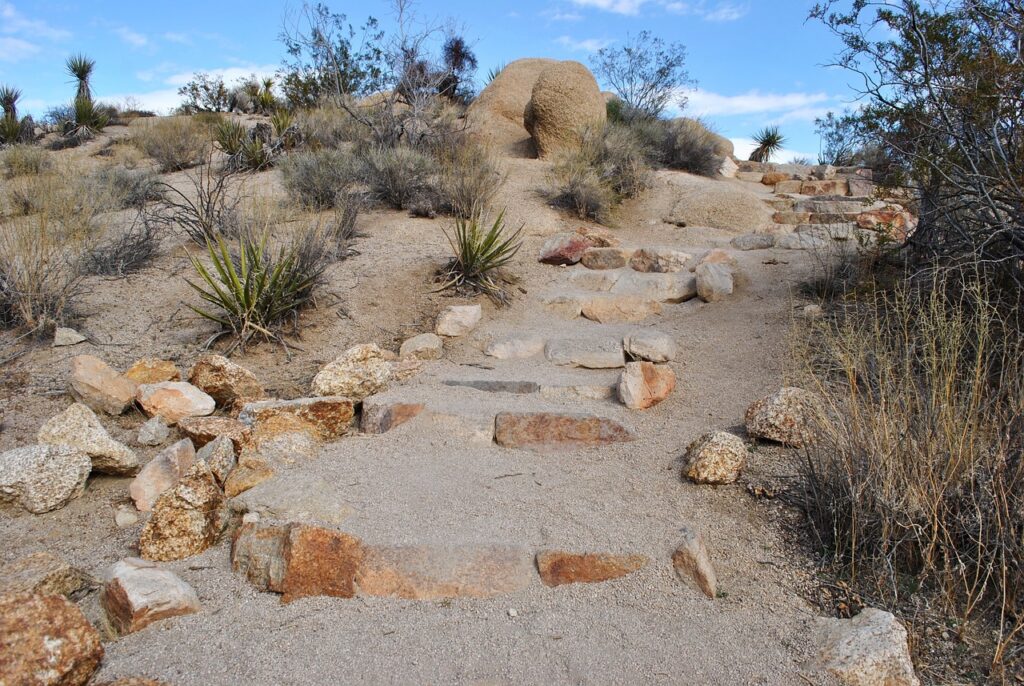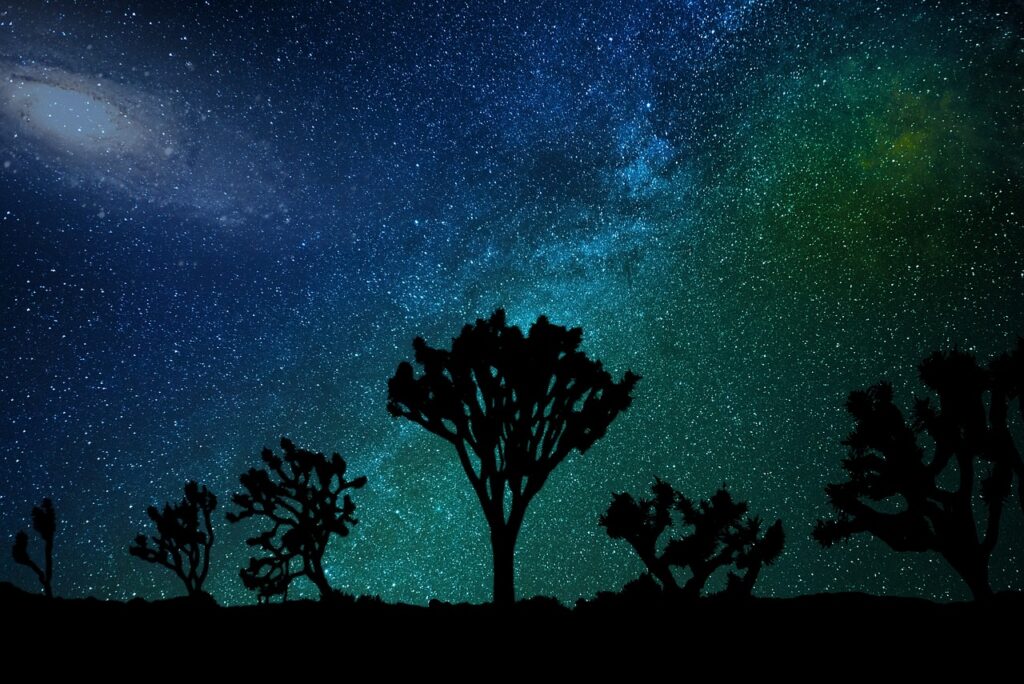This National Park Is Famous for Its Namesake Trees, Amazing Stargazing, and Otherworldly Desert Sceneries
Joshua Tree National Park, located in southern California, is one of the most iconic desert landscapes in the United States. With its striking Joshua trees, vast rocky outcrops, and clear night skies, the park offers a variety of outdoor adventures for nature lovers, photographers, climbers, and anyone seeking a peaceful escape into the wilderness. If you’re planning a trip, here’s a comprehensive guide to help you make the most of your visit.
How to Get There
Joshua Tree National Park is conveniently located about 2-3 hours from Los Angeles, San Diego, or Palm Springs, making it easily accessible for a weekend getaway or a longer stay. The park is situated in Riverside County and is accessible via several entrances:
- West Entrance (Joshua Tree Village): This is the most popular and central entrance, close to the town of Joshua Tree.
- North Entrance (29 Palms): Ideal for visitors staying in or around the nearby town of Twentynine Palms.
- South Entrance (Cottonwood Spring): Best for visitors coming from the south or those looking for a quieter entry point.
If you’re flying into the area, Palm Springs International Airport is the closest major airport, about 45 minutes away from the park. Once you arrive, driving is the best way to explore Joshua Tree as public transportation options are limited.

Know Before You Go
Before heading to Joshua Tree, here are a few things to keep in mind:
- Cell Service: Expect limited or no cell phone coverage within the park. It’s advisable to download maps, plan your route, and inform someone of your itinerary before heading out.
- Water and Supplies: There are no services or shops inside the park, so it’s essential to bring enough water, food, and other necessities. Be sure to hydrate, especially during the warmer months.
- Park Fees: The park charges an entrance fee, usually around $30 per vehicle for a 7-day pass. It’s best to pay at the entrance or online ahead of time.
- Wildlife: Joshua Tree is home to a variety of desert wildlife, including bighorn sheep, desert tortoises, and various species of birds. Always keep a safe distance and refrain from feeding the animals.
Best Time to Visit
Joshua Tree’s desert environment means it can get quite hot during summer, with temperatures often soaring over 100°F (38°C). Therefore, the best times to visit are in the spring (March to May) and fall (October to November) when the temperatures are milder, making it ideal for outdoor activities such as hiking and stargazing.
Winter (December to February) can be quite chilly, especially at night, but it’s an excellent time for those looking for fewer crowds and a more tranquil experience. Summer visitors should plan to explore early in the morning or late in the evening to avoid the midday heat.
Best Things to Do
Joshua Tree National Park offers a diverse range of activities, ensuring that visitors with different interests will find something they love. Here are some of the top things to do in the park:
1. Try Rock Climbing
Joshua Tree is famous for its world-class rock climbing, with over 8,000 climbing routes spread across its rugged terrain. Whether you’re a seasoned climber or a beginner looking for an introductory experience, the park has options for all skill levels. If you’re new to climbing, there are local climbing schools and instructors who can guide you safely.
2. Go Stargazing
As an International Dark Sky Park, Joshua Tree offers some of the clearest night skies in the U.S. The lack of light pollution provides visitors with the chance to see a stunning display of stars, planets, and even the Milky Way. The best stargazing locations are Hidden Valley, Jumbo Rocks, and the Cholla Cactus Garden, where the dark skies offer unparalleled views.
3. Attend a Ranger Program or Schedule a Guided Tour
For a deeper understanding of the park’s unique ecosystem and history, attend one of the park’s ranger-led programs. These educational sessions cover topics like desert ecology, geology, and the cultural history of the area. Additionally, visitors can schedule guided tours to explore hidden gems within the park, providing an expert’s insight into its natural wonders.
4. Hike Through the Desert
Joshua Tree is home to a variety of scenic hikes, from easy strolls to challenging backcountry treks. Walking through the park’s distinctive desert landscape is a must-do experience. The park has over 300 miles of hiking trails that offer stunning views, interesting rock formations, and opportunities to encounter local wildlife.
Best Hikes in Joshua Tree
Here are some of the best hikes in the park:
- Hidden Valley Trail: A short, easy 1-mile loop trail that offers amazing views of rock formations and is a great spot for beginners.
- Ryan Mountain Trail: A moderate 3-mile hike that takes you to the summit of Ryan Mountain, where you can enjoy panoramic views of the park.
- Barker Dam Trail: A 1.3-mile hike that takes you to a historic dam and offers a great opportunity to see local wildlife.
- Eureka Peak: For those looking for a challenge, this 5-mile trail leads to one of the highest points in the park and provides breathtaking views.
Places to Stay
Joshua Tree offers a variety of accommodations, from campsites to charming hotels. For those who enjoy camping, the park has several campgrounds, including the popular Jumbo Rocks Campground and Hidden Valley Campground, which are close to many of the park’s main attractions. If you prefer a more comfortable stay, there are a number of hotels, boutique inns, and vacation rentals in nearby towns like Joshua Tree, Twentynine Palms, and Palm Springs.

Places to Eat
While there are no dining options inside the park, the nearby towns of Joshua Tree and Twentynine Palms offer plenty of great spots for a meal. Try Crossroads Café or Pappy & Harriet’s Pioneertown Palace, both local favorites for delicious food and live music. If you’re staying in Palm Springs, you’ll find a wide variety of dining options, from casual eateries to fine dining.
Travel Jotters Tip:
Travel Jotters Tip: Be sure to pack snacks and plenty of water for your hike. While there are some places to stop and eat nearby, the park itself doesn’t have restaurants or stores, so it’s always a good idea to come prepared.
Conclusion
Joshua Tree National Park offers a unique blend of natural beauty and outdoor adventure. Whether you’re climbing its famous rocks, hiking through its rugged landscapes, stargazing under its dark skies, or simply relaxing in the tranquility of the desert, the park is a destination that will leave you inspired and refreshed. Plan your trip around the best times to visit and make sure to explore all that this remarkable place has to offer.











